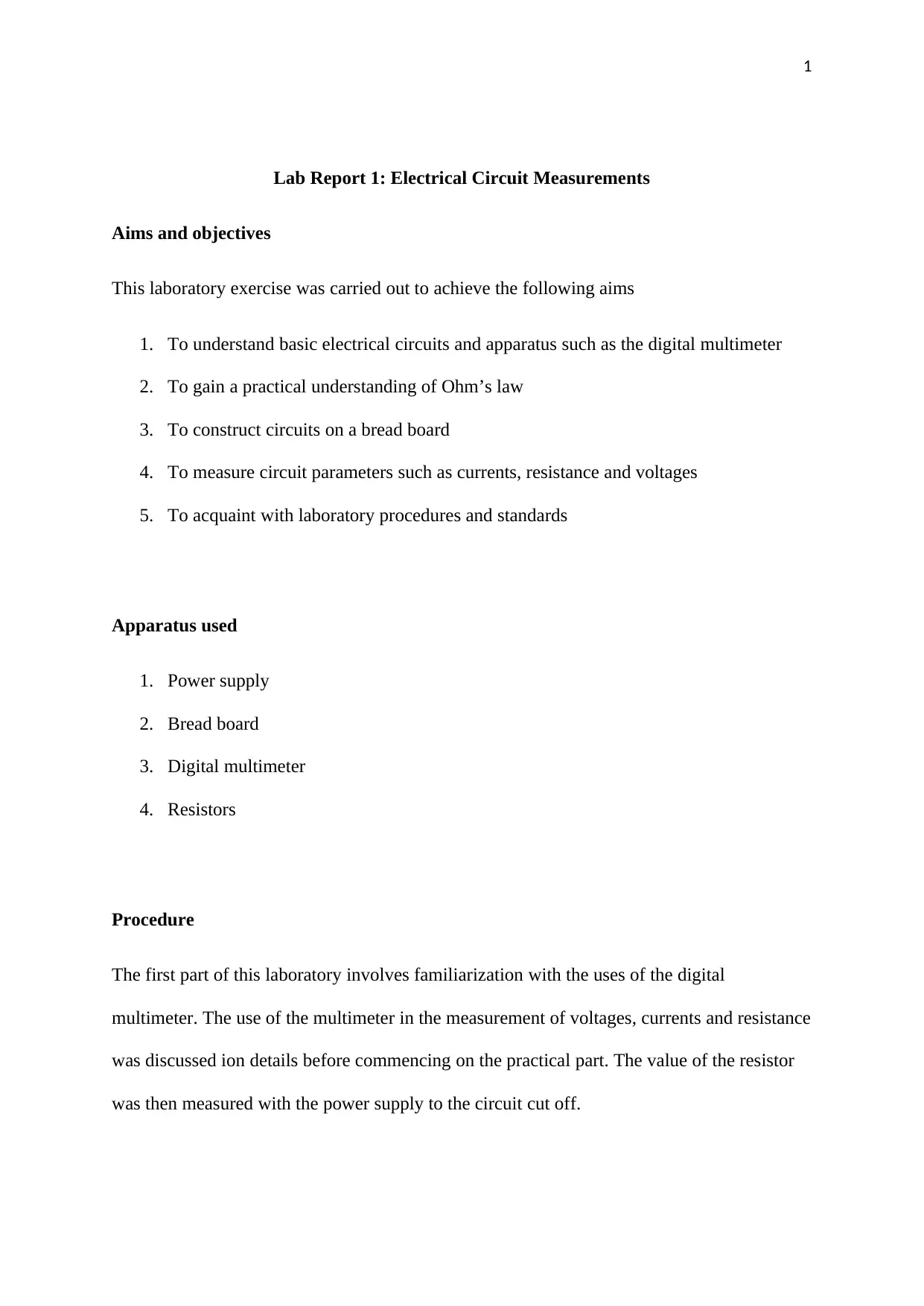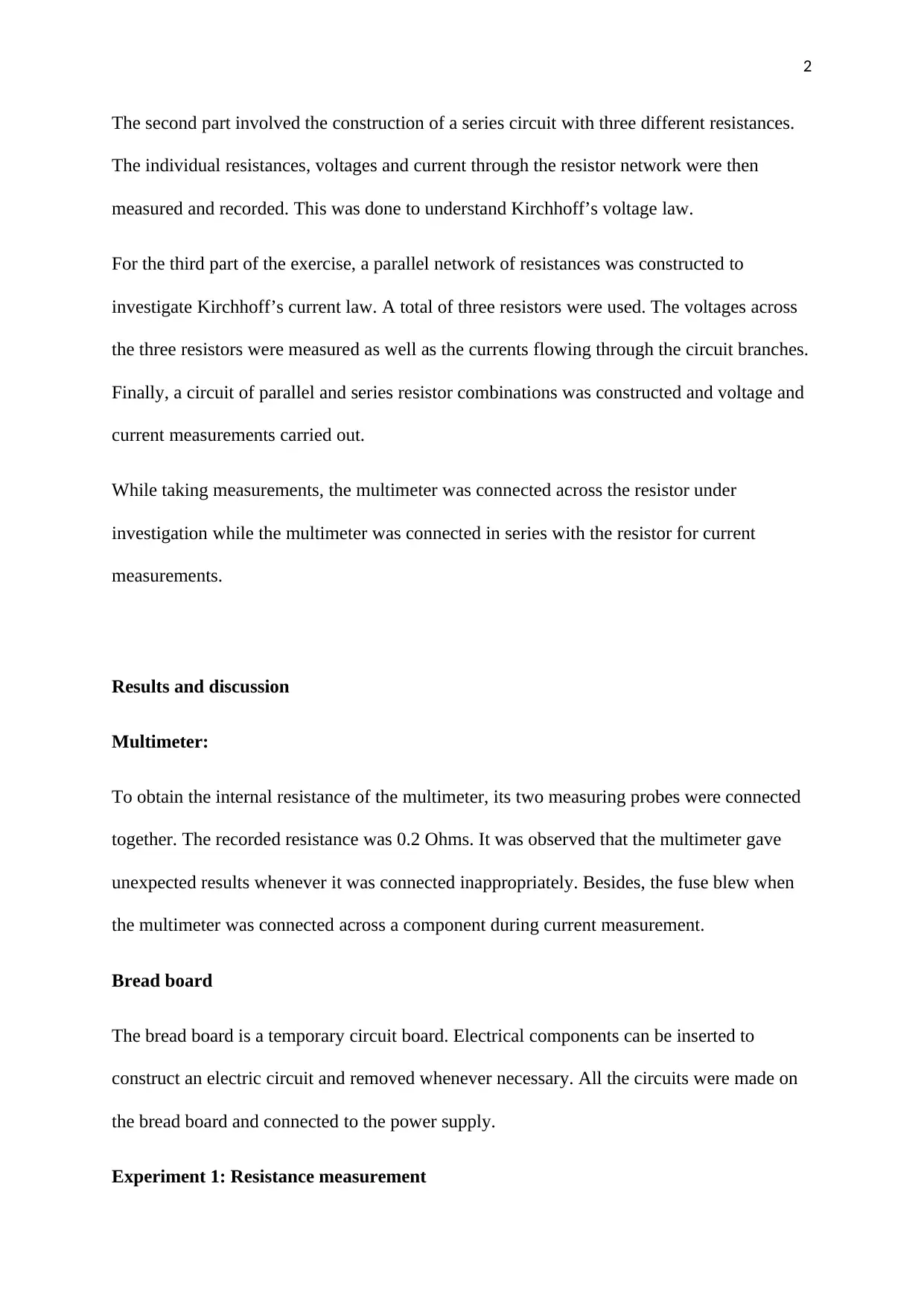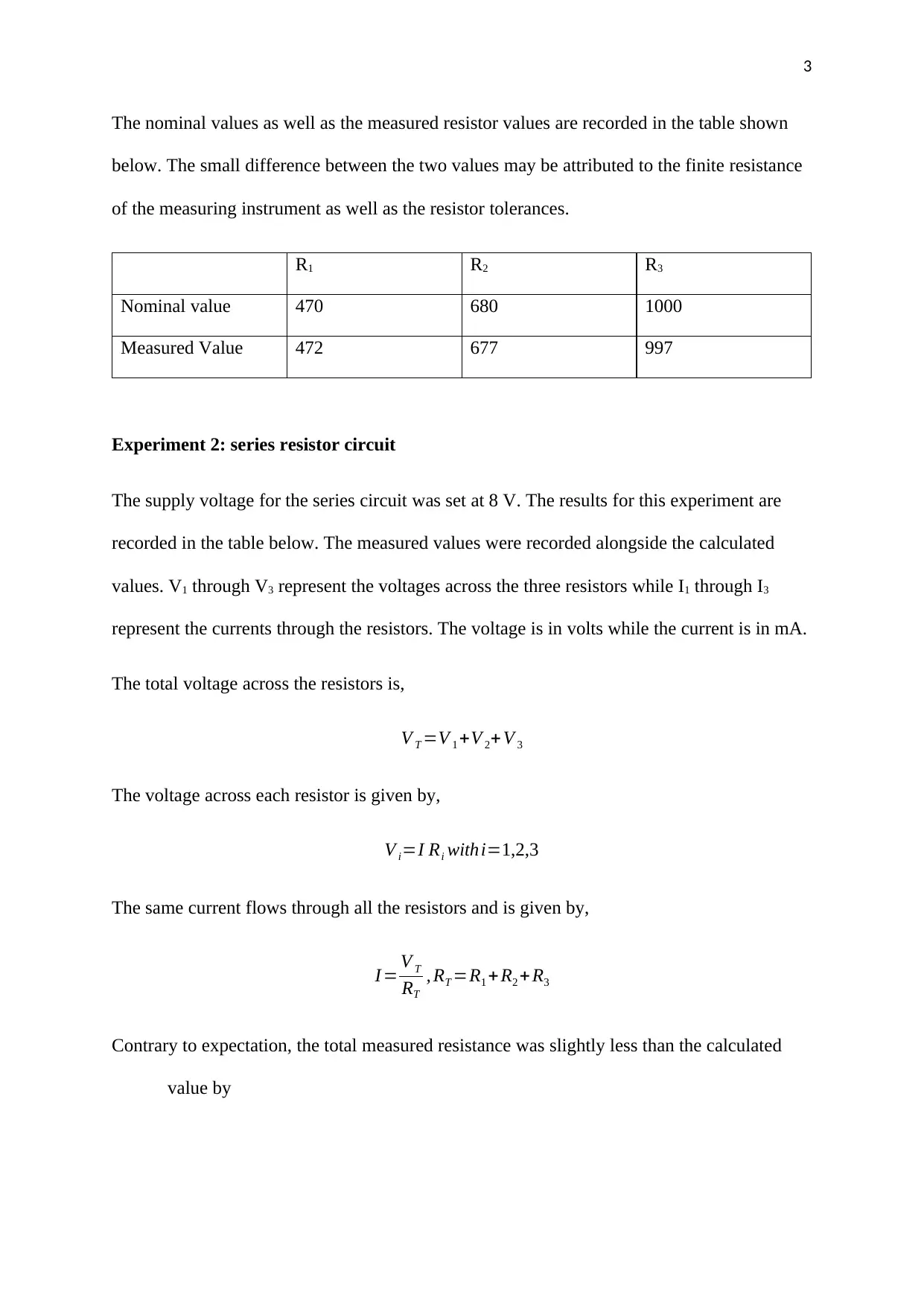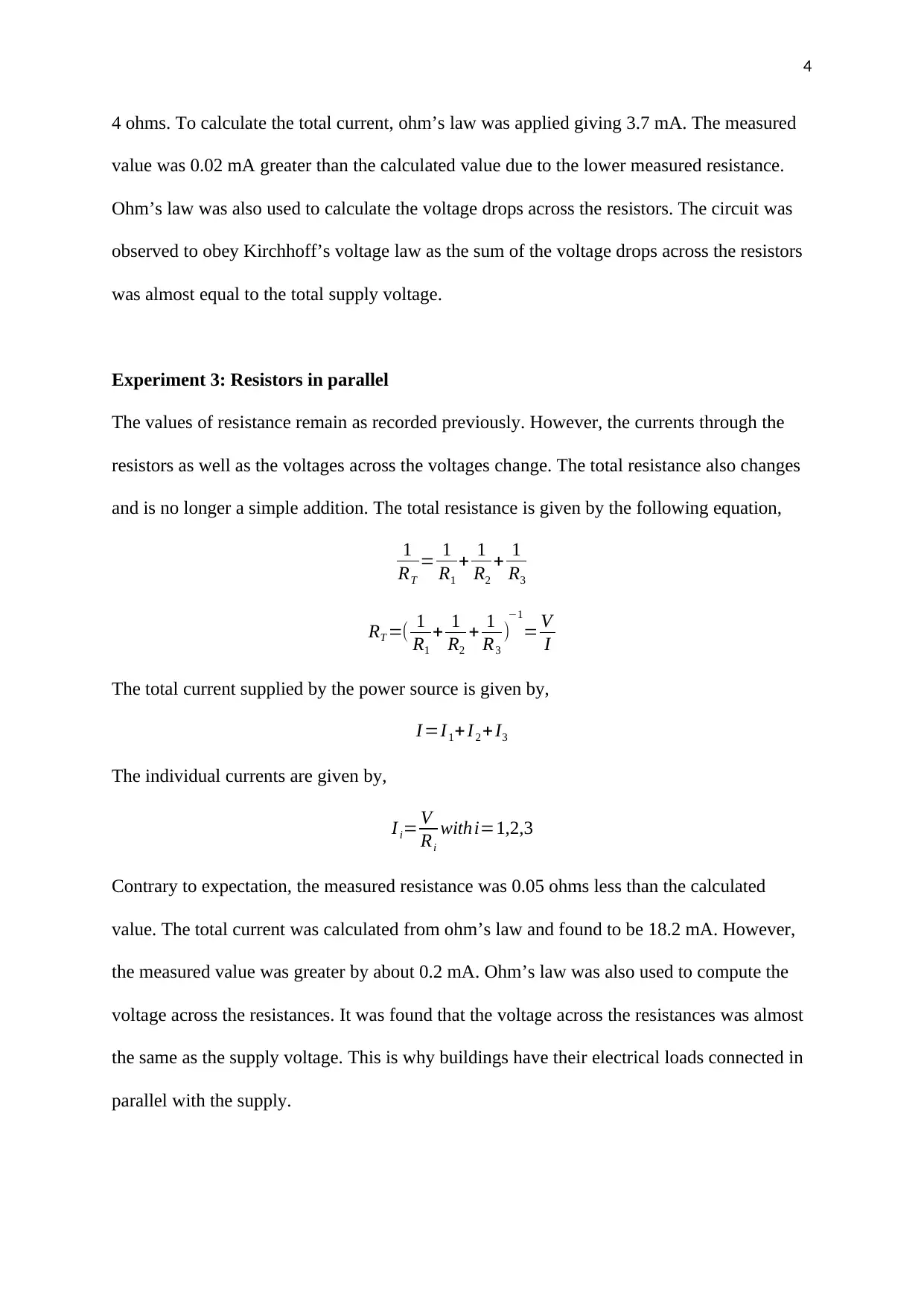University Lab Report: Electrical Circuit Measurements, EE 101
VerifiedAdded on 2022/10/16
|5
|954
|486
Report
AI Summary
This lab report details an experiment on electrical circuit measurements, focusing on fundamental concepts and practical applications. The objectives included understanding basic electrical circuits and apparatus, gaining a practical understanding of Ohm’s law, constructing circuits on a breadboard, measuring circuit parameters, and becoming familiar with laboratory procedures. The report outlines the apparatus used, including a power supply, breadboard, digital multimeter, and resistors. The procedure involved multimeter familiarization, resistance measurements, construction of series and parallel circuits, and a series-parallel combination. Results and discussions cover multimeter internal resistance, breadboard usage, and detailed analysis of each circuit configuration. The analysis includes nominal and measured values of resistors, voltages, currents, and comparisons with calculated values based on Ohm's and Kirchhoff's laws. The experiments successfully verified Ohm’s law and Kirchhoff’s voltage and current laws, with observations on the impact of series and parallel configurations on voltage, current, and resistance, and concludes that the objectives of the lab were met.
1 out of 5












![[object Object]](/_next/static/media/star-bottom.7253800d.svg)